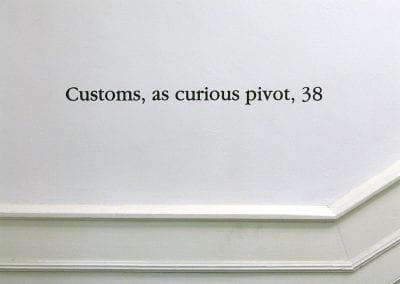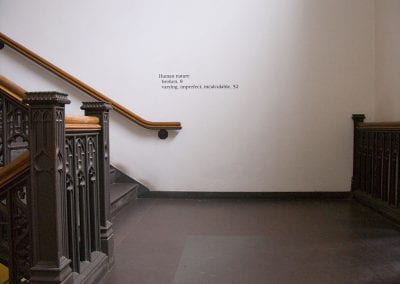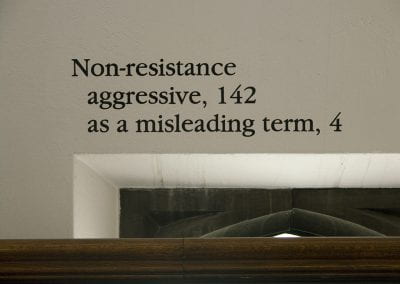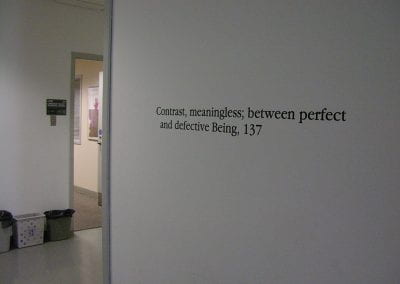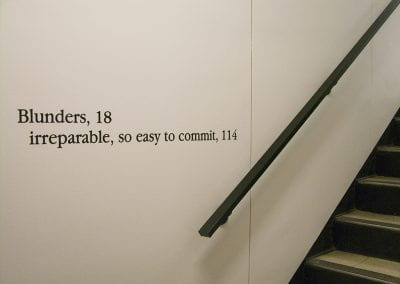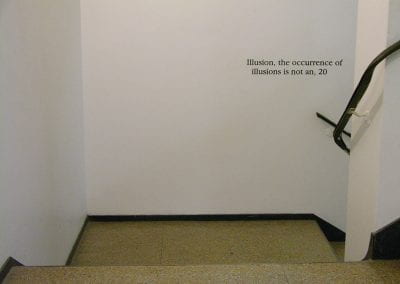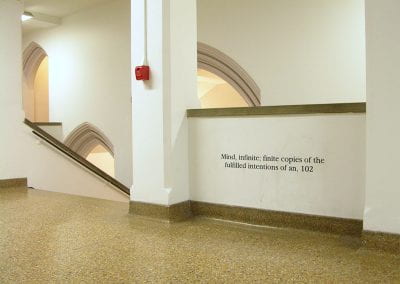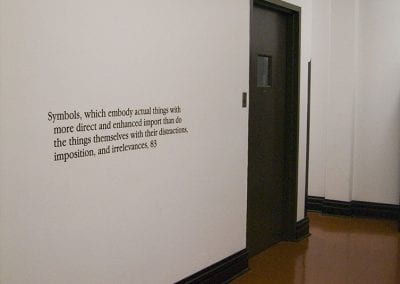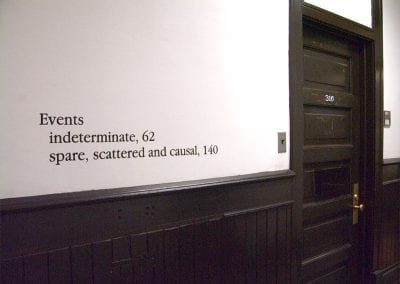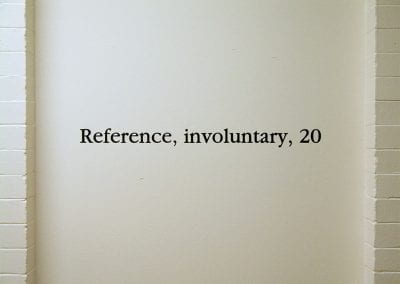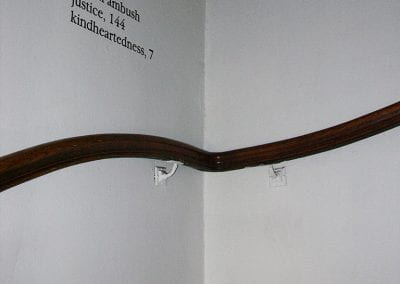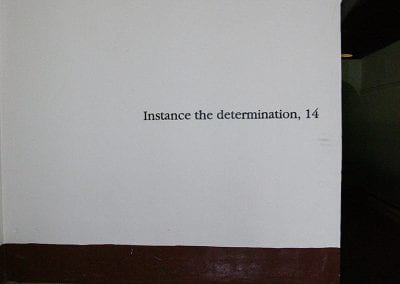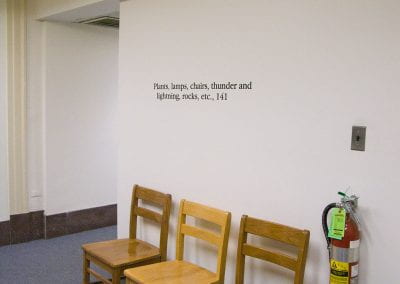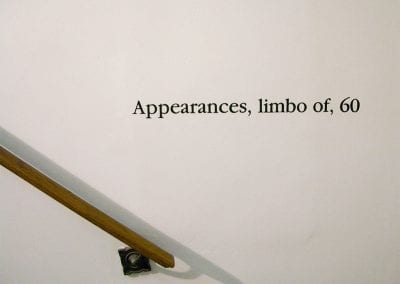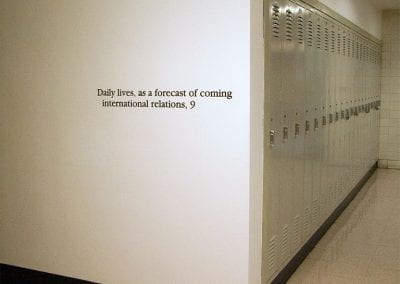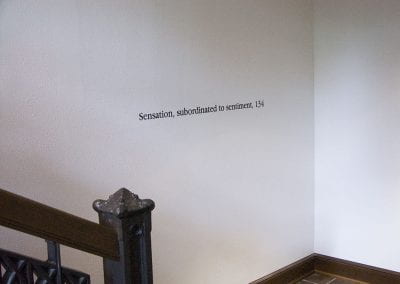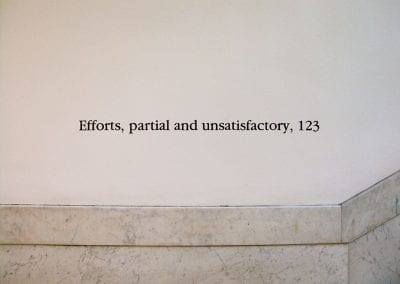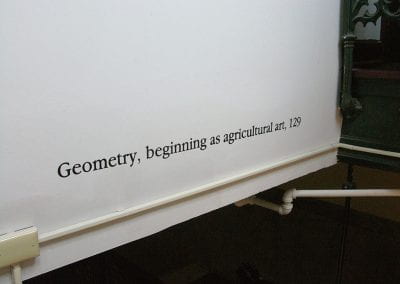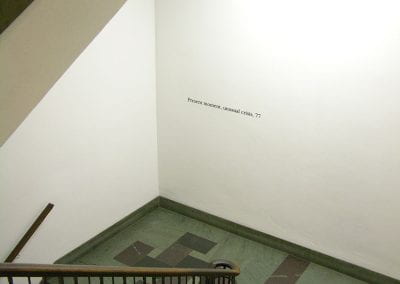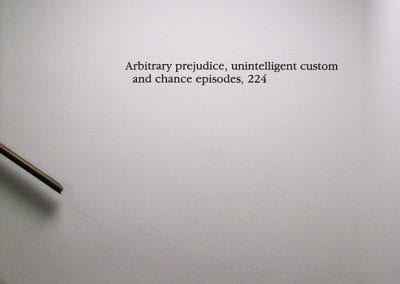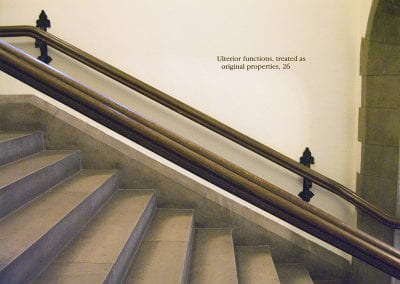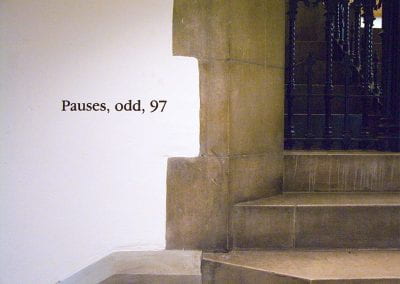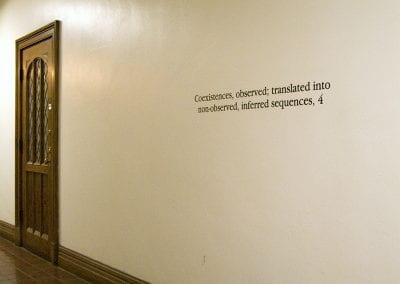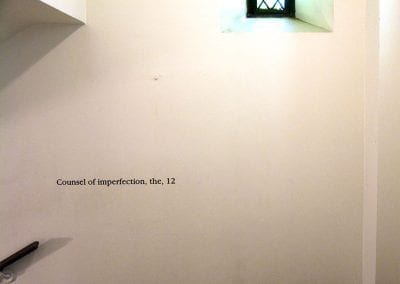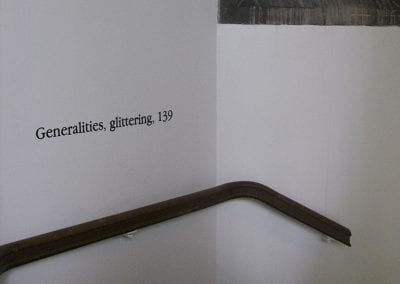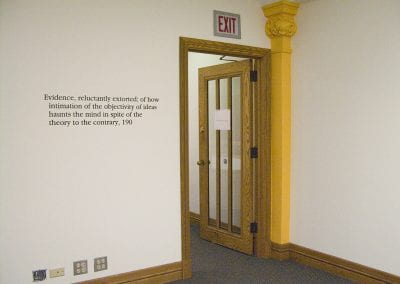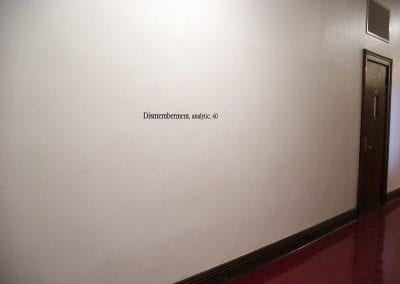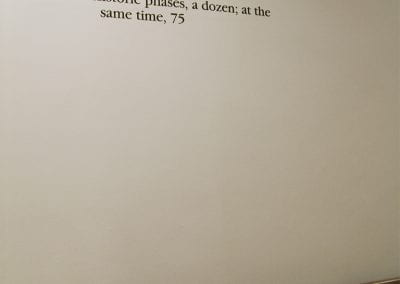Mirra’s project includes thirty entries drawn from the indexes she made for the two books (over 500 pages of text), including the eponymous phrase “Instance the determination, 14”. The artist selected liminal spaces where the words would be painted inside academic buildings across the University’s main quadrangle, each one site-specific, with consideration of the content of the entry with its context, both formally in space and conceptually in relation to the department housed in each building. Some of the placements were also effected by friendship, deliberately positioned near the office of a colleague of the artist’s. Mirra wanted the texts to appear integrated with the architecture around them, not overt in their presence. She wanted to continue the tradition of hand-painted signage she remembers seeing on campus in buildings like Walker. She commissioned a Chicago-based sign painter to hand-paint all of the index entries using a meticulous process combining stenciling—“pouncing” powdered graphite to create a ghost image of the letters—and freehand painting.
The artist writes on her website: “Recontextualized and architecturally integrated, the mined texts behave not as signifiers back to the source texts, but instead point outwards. They are located in stairwells and hallways in order to be encountered within ordinary movement through the university.”[2]
Mirra was invited to create this work by James Chandler, an English professor who was then Director of the Franke Institute for the Humanities. At the time, the Franke Institute had a multi-year Mellon Foundation grant that culminated in a conference called “On the Fate of the Disciplines” that investigated whether universities have the right departments to support active, contemporary intellectual practices. The artwork premiered at the conference, which was attended by directors of Humanities programs from all over the world. Chandler knew that Mirra, who taught here from 2001 until 2005, had been writing indexes and engaging with the index form as a mode of poetic practice. The first book Mirra indexed was The Rings of Saturn by W.G. Sebald, a novel that contained many recurring motifs and that seemed to ask for an index. Inspired by John Cage and Jackson Mac Low, Mirra had previously worked with texts in other ways, such as the mesostic poem, in which a vertical phrase intersects with a ‘normal’ horizontal text. She found indexing a form of intimacy within reading, as it provided a way to spend more time with a text by responding to it without commenting on it, rather letting it speak for itself in a distilled form.
An index is an alphabetical list, placed (usually) at the end of a book, of the names, subjects, etc. occurring in it, with indication of the places in which they occur.[3] The index is essential to scholarship, as it provides the inquisitive reader a straight path toward the topic that interests her most. Mirra’s index is entirely appropriate for an academic setting (how typical, UChicago has an index within its public art collection!), yet it also subverts the attempt to read the texts in an academic fashion. As Professor Bill Brown put it, “Mirra’s indexing project, dislocated from any art gallery and pursued in stairwells and halls, suddenly draws attention to the locator, to the dynamics of location and dislocation, to the freedom of the word no longer bound within books and shelved.”[4] The artist’s index does the opposite of what a conventional index does: in most cases the passerby viewer will have no idea what book is being referenced, thus the words invite free and highly personal associations, ‘involuntary references.’ This is how we read before we ever become scholars: by encountering individual words, phrases and sentences and, through intuition as opposed to analysis—the ordinary movement within—we perceive whether and how the words have an effect on us.
The highly personal approach to indexing on display in Instance the determination represents a mode of reading that is imbued with diligence and care. “Care” is a shared theme in the source texts by both Dewey and Addams; the sense of care carries through to the mental labor of indexing, of close reading and selection of which entries are mapped, and in the technique used to transfer the words on to the walls, with skilled hands and eyes.
Written by Nancy Chen


